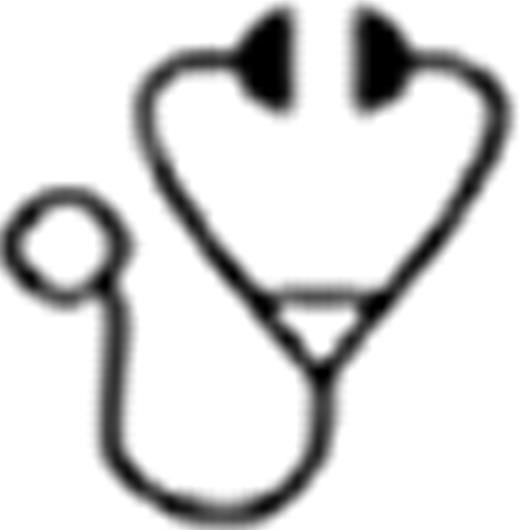Abstract
High-dose therapy (HDT) and autologous hematopoietic cell transplantation (auto HCT) has been shown to improve outcomes in mantle cell lymphoma (MCL) when used in first remission. In contrast, most series evaluating HDT and auto HCT when used for relapsed/refractory (rel/ref) disease suggest that the outcomes are typically poor. Such data have broadly limited the use of HDT and auto HCT in this setting, though the question of a potential benefit of this approach in a subset of these patients has never been addressed. We, thus, hypothesized that certain factors could be identified to predict which patents with rel/ref MCL would experience a favorable outcome after auto HCT.
Records from consecutive pts older than 18 years with a confirmed diagnosis (dx) of MCL receiving HDT and auto HCT between April 1996 and February 2011 at our center were reviewed. Pts who received auto HCT for either second or later remission or for primary refractory disease were identified while excluding those who received a planned tandem auto-allogeneic HCT. Characteristics both at dx and at the time of pre-HCT work-up were recorded. The statistical significance of differences in event rates was evaluated with the proportional hazards regression model. Reported p-values are based on the Wald statistic, and two-sided p-values less than 0.05 were considered statistically significant. Kaplan-Meier (K-M) curves were used to estimate the probabilities of overall and progression-free survival (OS and PFS, respectively).
From a cohort of 165 pts, 68 (41%) met the prespecified definition of rel/ref MCL. In this subgroup, the median PFS was 14 months and the median OS was 36 months. The median age at the time of auto HCT was 58 years (range 41–70), and the median number of treatments pre-HDT was 2 (range 1–6). There were 9 pts (13%) with blastoid histology, and 18 patients (26%) had B symptoms (sx) at the time of dx. The median time from dx to auto HCT was 25 months (range 4–183). Pretransplant disease status included CR = 15 (22%), PR = 42 (62%), and chemorefractory or untested relapse = 11 (16%). Pretransplant simplified MIPI scores based on data obtained prior to HDT (sMIPI-Auto) were as follows: ≤ 2 in 26 pts (38%), 3 in 28 pts (41%), and ≥ 4 in 14 pts (21%). Three factors were identified as independent predictors of worse OS and PFS in multivariable models: 1. higher sMIPI-Auto (HR 2.0 for OS, p = 0.001; HR 3.1 for PFS, p < 0.001), 2. presence of B sx (HR 2.5 for OS, p = 0.009; HR 2.6 for PFS, p = 0.005), and 3. lower remission quotient (RQ), calculated by dividing the time in months from diagnosis to auto HCT by the number of prior treatments (HR 1.8 for OS, p = 0.002; HR 1.4 for PFS, p = 0.01). The estimated linear predictors from this multivariable model allowed formulation of a predictive score for OS and PFS, which defined a subset of 23 pts (34%) with relatively low risk of death and/or progression having at least 2 favorable features from the above analysis (see Figure, Score 1). Favorable groups specifically included: 1) sMIPI-Auto of ≤ 2 and no B sx, with a RQ ≥ 5, 2) sMIPI-Auto of ≤ 2, presence of B sx, and a RQ of ≥ 14, and 3) sMIPI-Auto of 3, no B sx, and a RQ of ≥ 14. Pts not meeting one of these sets of criteria, particularly those with either a sMIPI-Auto of ≥ 4 or a RQ of < 5 (independent of the other factors), were predicted to do poorly (see Figure, Scores 2 and 3). The K-M 3-yr estimates for PFS were 66% (95% CI 41 – 82%) for Score 1, 23% (95% CI 9 – 40%) for Score 2, and 24% (95% CI 8 – 45%) for Score 3; the K-M 3-yr estimates for OS were 80% (95% CI 54 – 92%) for Score 1, 43% (95% CI 22 – 62%) for Score 2, and 29% (95% CI 11 – 49%) for Score 3.
These data identify 3 simple factors (sMIPI-Auto, B symptoms, and high RQ) that can be used to distinguish MCL patients who may experience prolonged OS and PFS after auto HCT used for the treatment of rel/ref disease. In contrast to studies to date, our detailed analysis of this specific population could be used to provide another effective therapeutic option for up to one third of patients with rel/ref MCL, though independent validation of these results is required.
Progression-free survival in patients beyond first remission stratified by predictive score.
Progression-free survival in patients beyond first remission stratified by predictive score.
Holmberg:Sanofi: Research Funding; Seattle Genetics: Research Funding; Merck: Research Funding; Otsuka: Research Funding; Millenium: Research Funding.

This icon denotes a clinically relevant abstract
Author notes
Asterisk with author names denotes non-ASH members.


This feature is available to Subscribers Only
Sign In or Create an Account Close Modal